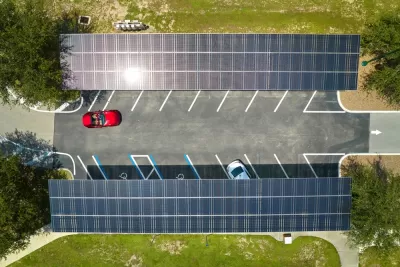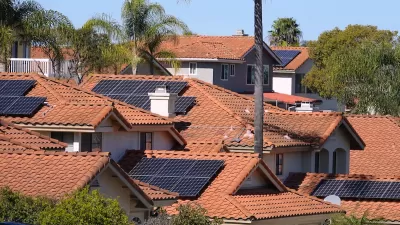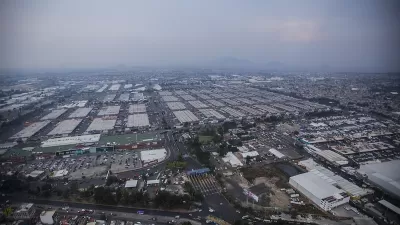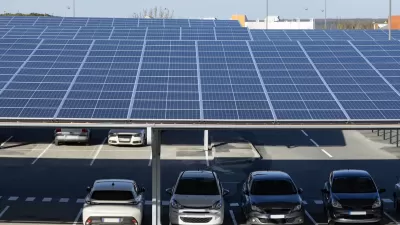Placing solar panels over parking lots has multiple benefits, but higher costs have prevented their widespread adoption in U.S. cities.

“We need to rapidly transition away from fossil fuels to avoid the worst effects of global warming. And, as extreme weather becomes more common, shade and shelter from downpours would be a welcome development for drivers,” writes Andrew Block for CNET. So why isn’t every outdoor parking space covered by solar panels?
Parking lot solar is becoming more common in some parts of the United States like the Southwest, but there are some challenges in retrofitting existing parking lots with solar canopies. According to Tim Powers of Inovateus Solar, “A carport is roughly 40% more expensive compared to a ground mount system.” But carports provide an extra service and can help institutions and businesses with large parking lots lower their carbon footprint. At Michigan State University, 5 percent of campus energy consumption is powered by parking lot solar panels. And it made use of existing development, preserving existing farmland. “Michigan State's installation kept 45 acres of agricultural land in production, a fact Michigan State called out in promoting one of the several awards it won for the array.”
Carport solar could also power electric vehicles, industry experts add. For example, “An average Walmart parking lot could support about 100 electric vehicle chargers if covered in solar panels, Pearce's research found.” Ultimately, while carport solar installations aren’t the most cost-effective way to install solar, they can be a useful solution where land is scarce. Last year, France passed a law requiring solar panels over most parking lots in the country by 2028.
FULL STORY: Why Isn't Every Parking Lot Covered With Solar Panels?

Planetizen Federal Action Tracker
A weekly monitor of how Trump’s orders and actions are impacting planners and planning in America.

Congressman Proposes Bill to Rename DC Metro “Trump Train”
The Make Autorail Great Again Act would withhold federal funding to the system until the Washington Metropolitan Area Transit Authority (WMATA), rebrands as the Washington Metropolitan Authority for Greater Access (WMAGA).

DARTSpace Platform Streamlines Dallas TOD Application Process
The Dallas transit agency hopes a shorter permitting timeline will boost transit-oriented development around rail stations.

LA County Creating Action Plan to Tackle Extreme Heat
Los Angeles County is creating a Heat Action Plan to help communities stay safe during extreme heat, with steps like adding more shade, improving buildings, and supporting the neighborhoods most at risk.

Maryland Plans Quick-Build Complete Streets Projects
The state will use low-cost interventions to improve road safety in five Maryland counties.

Downtown Los Angeles Gears Up for Growth
A new report highlights Downtown L.A.’s ongoing revival through major housing projects, adaptive reuse, hospitality growth, and preparations for global events in the years ahead.
Urban Design for Planners 1: Software Tools
This six-course series explores essential urban design concepts using open source software and equips planners with the tools they need to participate fully in the urban design process.
Planning for Universal Design
Learn the tools for implementing Universal Design in planning regulations.
City of Charlotte
Municipality of Princeton
Roanoke Valley-Alleghany Regional Commission
City of Camden Redevelopment Agency
City of Astoria
Transportation Research & Education Center (TREC) at Portland State University
US High Speed Rail Association
City of Camden Redevelopment Agency
Municipality of Princeton (NJ)





























